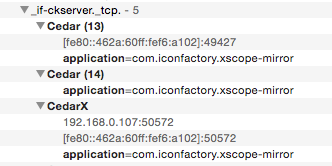It turns out someone at the FBI advised another law enforcement officer in San Bernardino to reset the iPhone that the government wants Apple to unlock.
This is just another episode in a complete forensic shit show.
Remember, this is the same case where the media was allowed to roam freely through a crime scene. One of the photos in that gallery shows a computer without an Ethernet connection on the wall (the age of the apartment also suggests that there would be no wired Internet.)
What are the chances that there was a wireless network in that apartment? What are the chances that there are IP logs on that router? Or maybe some kind of data backed up to a disk on the router? Here’s another wild guess: maybe that router was used to connect to an online backup service.
Yep, someone did the equivalent of a “restore factory defaults” on a device under active investigation.
What we’re seeing here is law enforcement’s complete lack of understanding of how digital devices store and transmit data. This new evidence is much more intricate than smoking guns or blood splatters. The important stuff is what you don’t see: it’s a hard problem where the people dealing with it are untrained. Shit, I work in this business and trying to decipher what’s going on makes my head spin.
Yet law enforcement is asking Apple to not only provide data, but also to create a forensic instrument that allows them to extract information from any device. And by its very nature, this tool would be made widely available throughout the forensic and law enforcement community.
Basically, the government is asking Apple to hand over a golden key that can defeat the security of any device to folks that can’t even secure a wireless network. Worse, this whole process is being overseen by politicians that think the problem is predators getting access to their grandkid’s Playstation.
This is why the entire tech community is saying “No fucking way.”
Updated February 21st, 2016: Several people have commented about my use of “restore factory defaults” in the post above. My intention was figurative, not literal.
The folks involved with the investigation were pressing buttons without understanding the consequences of their actions. To me, it feels like a “reboot to fix” approach. The password reset did not damage any data, it just made automatic backups stop working because iCloud information on the device needed to be updated, and that can’t be done without a passcode.
Others have reminded me that the FBI had cleared the crime scene. That’s true, but since the Wi-Fi equipment was not collected as evidence, it still shows that the investigators were out of their league. In an electronic investigation, a router is a key piece of the puzzle.
Both of these things are details in a bigger picture: the FBI wants to hold the private keys to a public key encryption system that affects the privacy of hundreds of millions people. If they can’t get the details of an online backup service right, how the hell do we expect them to guard a back door?
There’s also a possibility that the iCloud password reset was intentional. If this is the case, we have a government that is extorting Apple by essentially planting evidence. Imagine what they could do with a private key.
